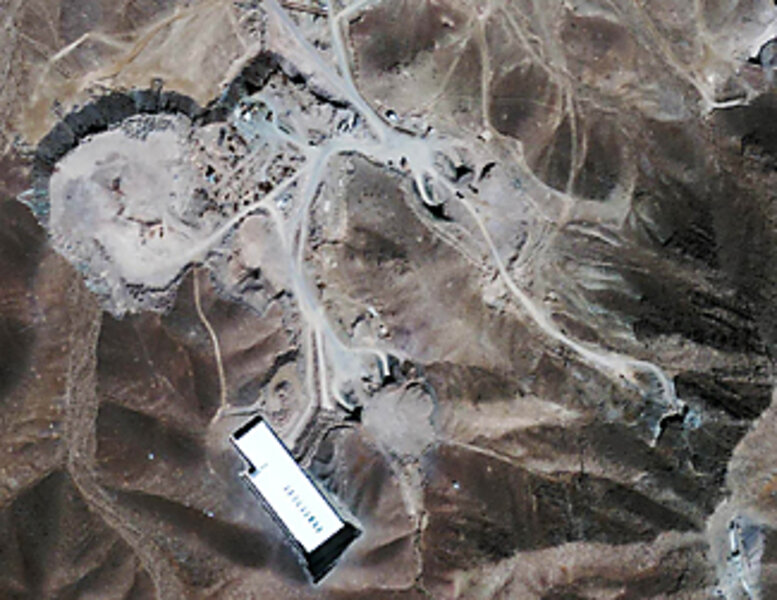D.C. Decoder: What do photos of Iran nuclear site tell US?
Loading...
| Washington
During the latter years of the cold war, Decoder knew an intelligence analyst who described his work as "shedology." He spent all day looking at spy satellite photos of the buildings on Soviet military bases and calculating what kinds of – and how many – weapons those sheds could hold.
Today, spy agencies all over the world are engaging in an advanced kind of shedology as they examine overhead images of Iran's alleged nuclear facilities. But really, how can they conclude anything from pictures taken with a camera orbiting hundreds of miles overhead?
Photos made public so far don't exactly scream "uranium enrichment plant." They show something that looks like a warehouse – and lots of sand.
So what do real analysts look for?
The first thing is context. That building may resemble a Wal-Mart, but it is being constructed on a known Iranian military facility. Shadows indicate that it is being buried. That's expensive. The Iranian government must value whatever that building will hold.
"They cut a large section of rock out of the side of a mountain to do this facility," says Tim Brown, a senior fellow and satellite imagery specialist at GlobalSecurity.org.
The second clue is details – and how they change over time. Photos taken in the early stages of construction indicate the placement of amazing amounts of steel rebar within the building's poured concrete. That could be an attempt to harden the place against bombs.
Then there's calculation. That means figuring out the volume of displaced earth, to determine whether there are hidden tunnels, and looking at angles and shadows to measure the facility itself.
"The bottom line is, the square footage is big enough to hold 3,000 P-2 [uranium enrichment] centrifuges," says Mr. Brown.
Real intelligence agencies are not always right. No one ever found any of Saddam Hussein's purported weapons of mass destruction in Iraq, after all.
But the US seems so sure about the uranium enrichment plant that it must have other intelligence about it besides photos – maybe intercepted phone calls or a tip from a human spy.
"All those things allow the US intelligence community to figure out what's going on. It's working the entire process," says Brown.
---
Could Israel attack Iran? Read more about the likelihood of an Israeli air strike here.





